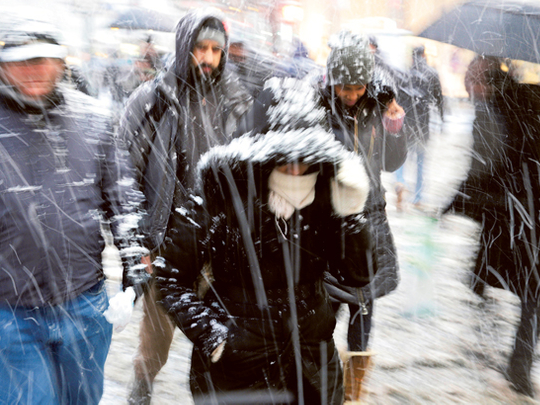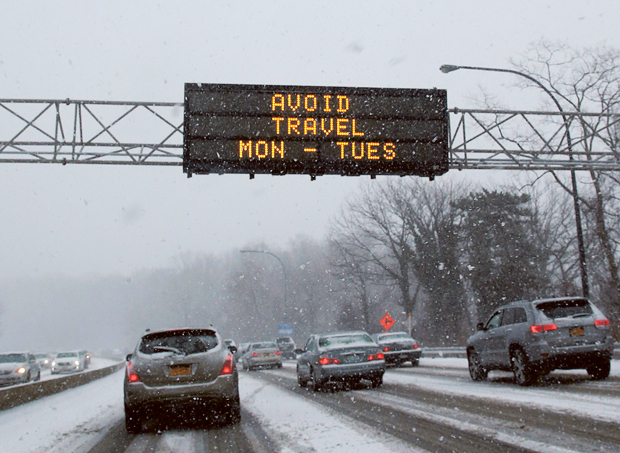
New York: Weather forecasters have dialled back their earlier dire warnings of record-breaking blizzards in the north-eastern US, as states that had been placed on high alert woke up to far less snow than anticipated.
The National Weather Service (NWS) in New York said about 14 centimetres of snow had fallen in Central Park by early on Tuesday and nearly 25cm were recorded on parts of Long Island. NWS officials in Boston reported winds of up to 100km/h at Nantucket memorial airport.
Governors in six states had declared emergencies, but early on Tuesday weather forecasters began to speculate that they had got it badly wrong. “My deepest apologies to many key decision-makers and so many members of the general public,” tweeted Gary Szatkowski, a meteorologist in Mount Holly, New Jersey.
Chris Christie, the governor of New Jersey, had ordered all but the most essential government workers in his state home from Monday afternoon until Wednesday at the earliest. “Please stay home,” he said on Monday.
New York governor Andrew Cuomo banned travel from 11pm on Monday for all but emergency vehicles on roads in 13 counties, including New York City, suburban Westchester and Long Island, with the threat of a $300 (Dh1,125) fine for violators.
“If you are in your car and you are on any road, town, village, city, it doesn’t matter, after 11 o’clock, you will technically be committing a crime,” Cuomo said. “It could be a matter of life and death so caution is required.”
Additional driving bans in Connecticut, Massachusetts and New Jersey brought travel across the region to a standstill. About 6,500 flights in the region were cancelled, with many not expected for rescheduling until Wednesday. Train services on routes between New York and Boston were also cancelled.
The UN headquarters gave itself a day off on Tuesday, while east coast schools, including in New York City — America’s largest state school system, serving 1 million students — shut down. Universities, including Harvard and the Massachusetts Institute of Technology, cancelled classes.
Stock exchanges, including Intercontinental Exchange Inc’s New York Stock Exchange unit, Nasdaq OMX Group, and BATS Global Markets, said they expected to stay open for normal operating hours on Tuesday.
The last time bad weather closed the stock markets was in October 2012 when Hurricane Sandy hit the east coast with flooding, punishing winds and widespread power outages.
The latest storm posed a fresh challenge to Bill de Blasio, the New York mayor, under fire from police who criticised his support of public protests about police violence against black men. He was lambasted for keeping schools open in the last major storm.
Boston and New York airports were heavily affected. New York authorities said virtually all flights at LaGuardia airport on Tuesday would be cancelled and there would be “significant” cancellations at John F. Kennedy international airport.
Coastal flood warnings were issued along the coasts from Delaware to Maine, with tides in the New York metro area expected to be as much three feet higher than normal early on Tuesday morning. Amtrak suspended rail service on Tuesday between New York and Boston, and into New York state, Vermont, Massachusetts and Maine.
The biggest snowfall on record in New York City came during the storm of February, 2006, dropping 90cms. But as the “snowmaggedon” failed to materialise, forecasters were left crestfallen.
“You made a lot of tough decisions expecting us to get it right, and we didn’t. Once again, I’m sorry,” tweeted Szatkowski.













